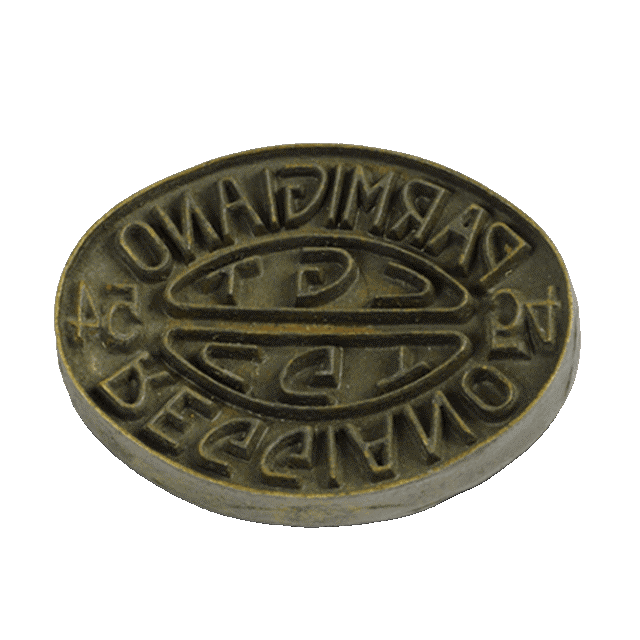
Parmigiano Reggiano, the King of Cheeses
26th March 2021
Parmigiano Reggiano also known as “Parmesan” and “The King of Cheeses”, is the classic Italian Cheese everyone knows about. It’s abundant in flavour and has an Unami taste, a rich taste known to be referred to as too delicious to describe. It is hard cheese that is pale yellow in colour and formed with a natural rind. The texture of the cheese is dependent upon how long it has been aged, the older it is the grainer it is.
History & PDO
Parmigiano Reggiano is said to have been created during the course of the middle ages, dating back to 1200-1300 AD, spreading over the local regions of Italy with production and consumption originating in the Reggio Emilia province.
Parmigiano Reggiano is a PDO cheese made in northern Italy in the provinces of Parma, Reggio Emilia, Modena and parts of Mantua and Bologna. The PDO outlines the strict restrictions in place for the production of the cheese, going as far as to stipulate the cow’s that produce it must be fed mainly on locally grown feed and must not be fed silage. The PDO is protected and enforced by the Parmigiano Reggiano Consortium, a council that defends the protection of designation of origin, facilitates the trade and consumption by promoting initiatives aimed at safeguarding the unique features of the product.
The Manufacturing Process
Parmigiano Reggiano is made with two different unpasteurised milks, partially skimmed milk from the evening milking and whole milk from the morning milking.
They are poured into large copper vats, where calf rennet and whey from the previous days cheese making, are added. The rennet causes the milk to coagulate and form curds which are then broken up using a ‘spino’ and heated to 55°Ce.
Example of a spino:

The curds then sink to the bottom of the vat and form together into one mass. A cloth is then used to scoop up the curd out of the whey and cut it into two. These halves or ‘twins’ are drained in the cloths and then placed in molds in a cylinder shape between 35-45cm diameter and 20-25cm high, weighing roughly 40lbs. These molds also have a pattern insert which gives the wheel its characteristic rind pattern and includes the dairy PDO identification number, the month & year of production as well as the dairies health mark. At this point the wheels are also marked with an individual Casein stamp allowing for the wheel to be identified and traced throughout its life. The wheels are now ready for maturation and are moved into a temperature controlled maturation chamber.
All wheels of Parmigiano Reggiano must be tested for quality at 12 months by the consortium, this is done by an expert cheese grader who asses each wheel against the Parmiggiano Reggiano specification for chemical, organoleptic and visual characteristics. The cheese grader will also use a small hammer to detect defects or cracks by tapping the wheel and listening closely. The wheels are then graded into one of three categories:
1. Parmigiano Reggiano – These wheels are approved for use and sale as Parmigiano Reggiano, the wheels are branded with the consortiums stamp of approval.
2. Parmigiano Reggiano Mezzano – These wheels meet the organoleptic requirements of Parmigiano Reggiano but show defects in the structure of the wheel. These are also branded but the rind is scored to show it is not a first grade wheel.
3. Downgraded – These wheels do not meet the Parmigiano Reggiano specifications and as such cannot be called or sold as Parmigiano Reggiano. These wheels must be de-rinded to remove the characteristic rind pattern seen on Parmigiano Reggiano wheels.
Below is the PDO consortium brand used to mark cheese wheels at 12 months, flanked either side by the dairy number.

The maturation must be for a minimum of 12 months and is commonly kept up to, 24 or 36 months – there is no maximum maturation period for Parmigiano Reggiano and products with up to 100 months can be purchased.
Uses & Pairings
Parmigiano Reggiano pairs well with many foods we know and love, including pesto, pizza, cured meats and even grapes. Due to the Unami taste, Parmesan is also easy to pair with wine. A 24 month Parmigiano-Reggiano pairs well with Lambrusco Rosso. The fruity pineapple notes of the Parmigiano lends itself beautifully to a light, slightly frizzante, red wine. A good Lambrusco Rosso is quite difficult to get hold of, but the flavour of a well-rounded cheese like Parmigiano Reggiano also means that it pairs well with a white Lambrusco or Prosecco.
Every part of the cheese can be used – including the rind! Clean the Parmigiano Reggiano rinds well and dice them. Sprinkle with sesame seeds and cook in the microwave at maximum power for one minute. Remove and add chili, thyme and sesame to taste. Serve in small pots for a tasty aperitif with friends.
Source: Parmigiano Reggiano – The official website of the Consortium
Get in touch
If you don’t see the product that you are looking for it is possible that we could develop or source a product specifically for you. Want to find out more about how we make it easy to find dairy solutions?
Futura Foods UK Ltd.
The Priory, Long Street, Dursley,
Gloucestershire GL11 4HR